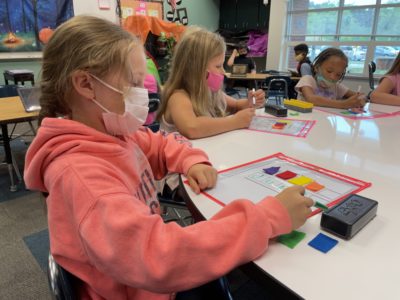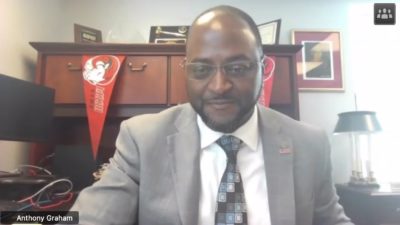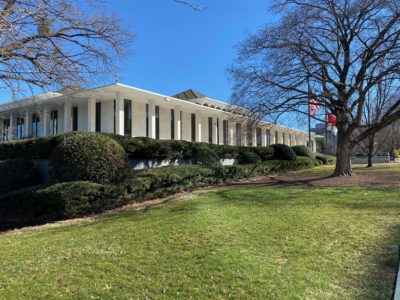The State Board of Education met for planning and work sessions on Tuesday and Wednesday, amid the backdrop of a teacher’s rally in its backyard and a school shooting at UNC-Charlotte just a few hours south.
Gathered in a conference room tucked behind the entry way of the Department of Public Instruction, the group focused on the business at hand: discussion around progress across the six goals adopted in a 2014-2020 Strategic Plan, and continuing collaborative and lively small group sessions around finalizing the Board’s next strategic plan.
On Tuesday, the SBE planning sessions focused on updates from NC Check-Ins sample programs, accountability and oversight for public charter schools, and equity plans under the Every Student Succeeds Act (ESSA). On Wednesday, the session covered the early literacy framework response, business systems modernization, and the health of the state’s principal pipeline. The SBE also spent considerable time honing its new strategic plan and goals through 2025.
Below, we take you inside the planning and work sessions.
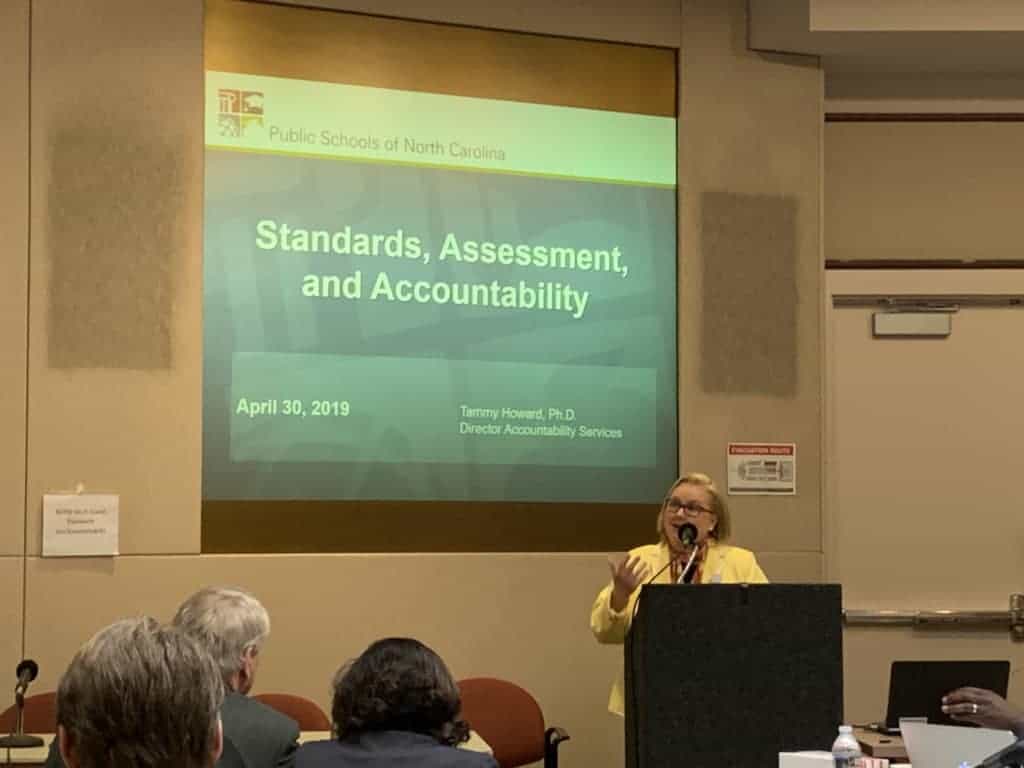
Discussions around 2014-2020 Strategic Plan
In July 2014, the SBE adopted a Strategic Plan citing six goals to be achieved by June 30, 2020. Those six goals were:
1 – Every student in the NC Public School System graduates from high school prepared for work, further education, and citizenship
2 – Every student has a personalized education
3 – Every student, every day has excellent educators
4 – Every school district has up-to-date financial, business, and technology systems to serve its students, parents and educators
5 – Every student is healthy, safe, and responsible
6 – Ensure equity of educational opportunity for all students
Through the years, the SBE has tracked progress across these goals and they served as a backdrop for the various updates and information presented to and by the SBE during its planning and work sessions.
Standards, assessments, and accountability on NC Check-Ins
Context: Michael Petrilli of the Thomas Fordham Institute told the SBE that a bachelor’s degree is life-changing for children growing up in poverty, but pointed to statistics showing only 14.3% of those in the lowest socio-economic status obtain one. Want more college graduates, he asked: Improve preparation of K-12 students. Petrilli pointed to data suggesting schools give passing grades to students who may not be prepared for the next level up, with it being especially prevalent at schools with a high number of socio-economically disadvantaged students.
What happened: The Accountability Services Division (ASD) shared an update on the NC Check-Ins, including the reliability of the assessment forms, end-of-grade assessment results for Wake County, which used NC Check-Ins in the 2017–18 school year, and the participation of schools and districts for the 2018–19 school year.
Data from Wake County provided three takeaways: (1) Too little attention is paid to the fit between the design of an assessment and its intended use. A lot of the negativity around assessment in schools arises from this problem; (2) Statewide summative assessments (EOG, EOC, etc.) are one kind of tool that serves some purposes well; and (3) Districts need a balanced system of assessment to meet the data needs of all our stakeholders regarding student learning outcomes.
Based on feedback from stakeholders, the ASD recommended that NC Check-Ins be expanded to science in grades 5 and 8 and to NC Math 1 in the 2019–20 school year.
Accountability and oversight of NC Public Charters
Context: When the majority Republican legislature removed a cap on public charter schools, opponents decried the move as potentially diverting funds from traditional public schools. While charter schools are billed as laboratories for innovation given that they get greater flexibility than traditional public schools, opponents question whether there have been measurable benefits. And among the chief complaint lobbied: There is not enough accountability or oversight.
What happened: On Tuesday, Dave Machado, Director of the Office of Charter Schools, presented on the accountability and oversight measures imposed upon public charters. These include, he said:
- Annual Independent Audit
- Performance Framework
- Renewals
- Compliance Team
- Complaint Investigations
- Site Visits
- School Closure/Non-renewals
Equity plan update
Context: ESSA requires that states and districts have an equity plan, and also that states identify equity gaps. The SBE endorsed a definition of equity as:
Educational equity means that every student has access to the resources and educational rigor they need at the right moment in their education, despite race, gender, ethnicity, language, disability, family background, or family income.
Strategies were organized around three key issues: (1) Teacher shortage; (2) Recruitment and retention challenges; and (3) Distribution decisions at district and building levels.
What happened: A subcommittee formed to study equity proposed 10 commitments for the SBE:
- Prioritize Equity: Set and Communicate an Equity Vision and Measurable Targets
- Start from Within: Focus on the State Education Agency
- Measure What Matters: Create Accountability for Equity
- Go Local: Engage Local Education Agencies (LEAs) and Provide Tailored and Differentiated Support
- Follow the Money: Allocate Resources to Achieve Fiscal Equity
- Start Early: Invest in the Youngest Learners
- Engage More Deeply: Monitor Equitable Implementation of Standards and Assessments
- Value People: Focus on Teachers and Leaders
- Improve Conditions for Learning: Focus on School Culture, Climate, and Social-emotional Development
- Empower Student Options: Ensure Families Have Access to High-quality Educational
Early reading framework update
Context: At the past three meetings of the SBE, members were presented information and discussed issues related to third-grade reading proficiency. This left some board members wondering about literacy initiatives and data at grades 4-12.
What happened: A planned, intentional focus on adolescent schoolwide literacy in the content areas with direct, explicit, systematic programming. Results yielded from 2013-2016 were up to 2.5 years of growth in one year. Presenters specified six key elements of a secondary adolescent literacy framework: (1) Create a literacy profile; (2) Form a literacy leadership team; (3) Develop common understandings and connections around literacy; (4) Establish a continuum of literacy support; (5) Build a plan for professional development and support; and (6) Conduct ongoing and annual reviews.
Health of NC’s principal pipeline
Context: Amid reports of challenges recruiting principals, the SBE hosted a panel on improving principal pipelines — with suggestions digging far deeper than simply raising pay (which the legislature proposes to do in its latest budget proposal).
What happened: Former teacher of the year Lisa Godwin spoke openly and honestly about her own decision not to become a principal in this state. As a young teacher, she had a superintendent “who saw something in me” and convinced her to get her master’s degree in administration at UNC-Chapel Hill. She graduated and served as an assistant principal before being called back into that superintendent’s office.
“He wanted to give me a school,” she said, referring to receiving an offer to become principal. “But I had to say no.”
Godwin said she struggled with stress from testing and grades, parents waiting for her in the parking lot and even being assaulted by a student. She didn’t want to deal with it anymore, so she went back into the classroom and became a kindergarten teacher. “I just needed to get back to my joy,” she said, before delivering a plea: “We have got to make things better for [these principals] guys. We have got to.”
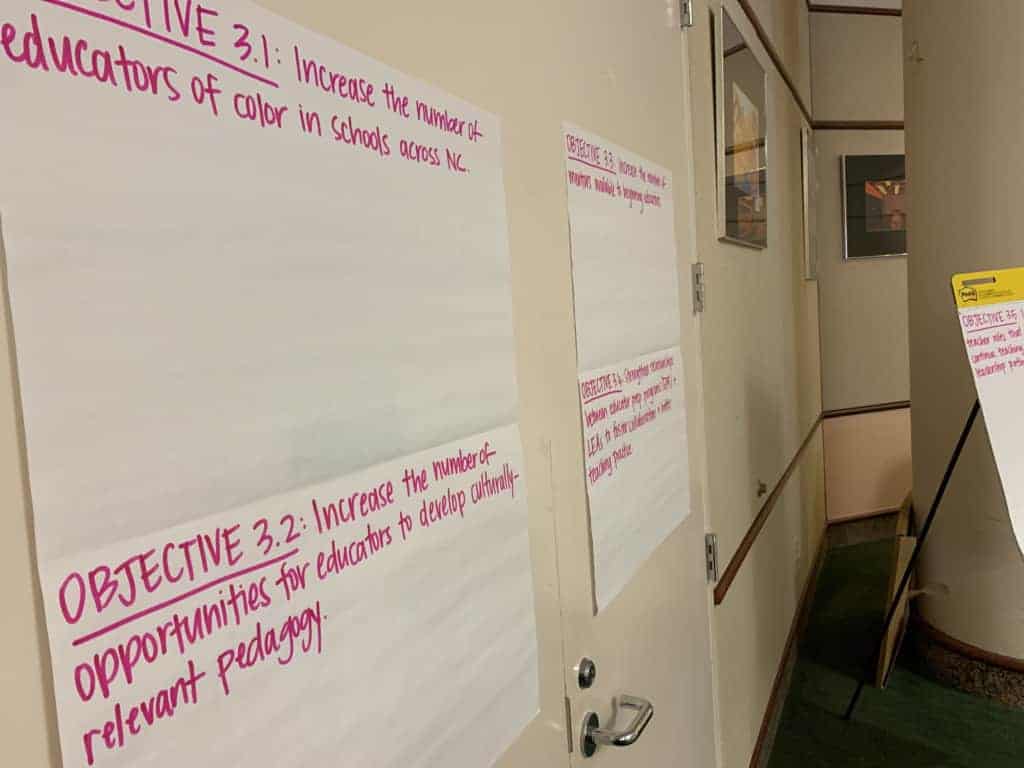
Discussions around 2025 strategic plan
Board member James Ford called the collective minds in the SBE planning session an “information rich” resource after board members broke out into three small groups and brainstormed around a new strategic plan. The new plan is shaping up to focus on three strategic goals, which the SBE hopes to achieve by 2025:
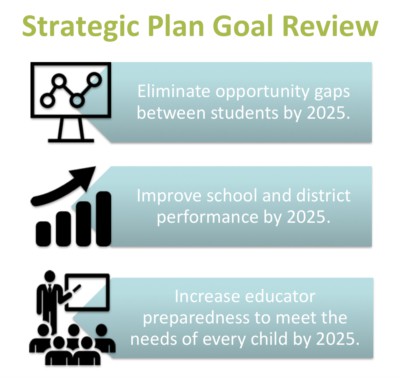
On Wednesday, the SBE fleshed out the three goals and objectives. What’s next? The board will spend the next two months soliciting feedback and finalizing the plan by June’s end. By May 8, the SBE plans to have materials ready to distribute (brochures, a survey link, equity lens questions) to stakeholders and complete drafts of a mission, vision, goals, objectives, strategies, initiatives, and metrics. At the June SBE Meeting, committee members will present high-level survey findings, share updates to the plan, and hear from WCPSS Office of Equity Affairs.
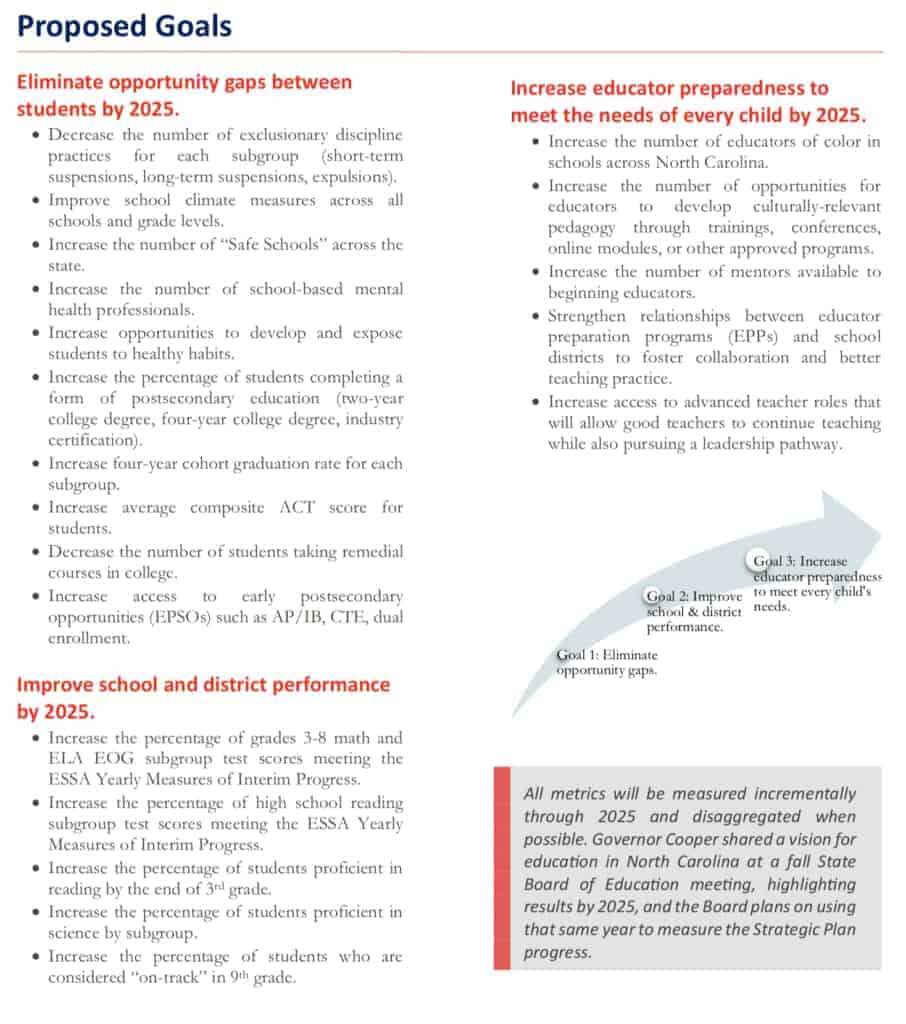
Editor’s note: The NC Center for Public Policy Research has a contract with James Ford’s consulting company, Filling the Gap Education Consultants, LLC, to conduct a three-year study of inequity in education across North Carolina.



